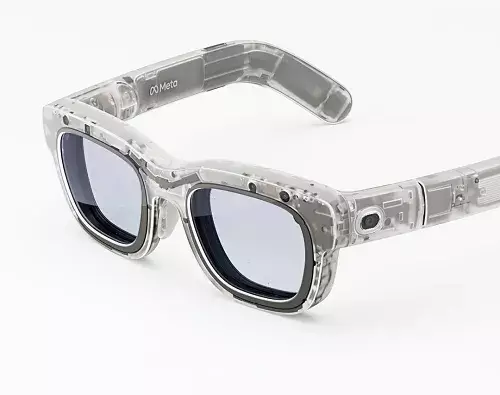In the fast-paced realm of technology, augmented reality (AR) stands out as one of the most thrilling frontiers. Meta, the tech giant formerly known as Facebook, is poised to make a substantial impact with its upcoming Orion AR glasses. Despite a consumer launch not being scheduled until 2027, the insights unveiled by Meta signal a commitment to radically reshaping the way we interact with digital content in our daily lives. The company has taken the wraps off its plans through highly detailed documentation on social media, raising expectations and inciting intrigue.
The driving force behind Meta’s AR glasses is a quest for a user-friendly and stylish device—a challenge that has plagued tech companies for years. The innovation of adding a compact “puck” designed to boost computing power and battery life is a noteworthy step in achieving sleeker eyewear. This focus on aesthetics could propel AR from the fringes of tech gadgets to mainstream acceptance.
Fashion Meets Technology
Traditionally, wearable technology has struggled with form versus function, often skewing heavily toward the functional side at the compromise of style. Meta’s ambition with Orion seems to lean decisively toward rectifying this imbalance. With the success of their Ray-Ban smart glasses, which combine a fashionable look with essential tech capabilities, Meta aims to draw a larger audience with similar elements in their AR glasses.
The integration of artificial intelligence into wearables presents opportunities that extend well beyond simple notifications or health tracking. It provides an interactive experience, where everyday environments can transform into information-rich platforms. The implications are staggering—imagine walking through a city and interacting with your environment through visual overlays that provide directions, historical context, and even social interactions. However, technology needs to radiate approachability; without this, even the most advanced AR functionalities could face skepticism from users.
Pricing Strategies: A Path to Adoption
Meta CEO Mark Zuckerberg’s critical stance toward the pricing strategy of Apple’s VisionPro is telling. At $3,499, Apple’s offering alienates a wide swath of potential users, raising essential questions about accessibility within the tech realm. Meta, in stark contrast, appears to be targeting a price point comparable to mobile phones, which could catalyze widespread adoption of its AR glasses.
Yet, achieving a price point that is economically feasible while peppering the device with advanced features is no small feat. Meta’s ambitions are undoubtedly complicated by external factors—such as ongoing U.S.-China trade tensions—which could complicate component sourcing and manufacturing costs. Balancing quality with affordability will be a considerable challenge, along with finding innovative revenue pathways, such as advertising opportunities, subscription models, and value-added features.
The Vision for the Future: AR Supplanting Mobile Phones
Zuckerberg’s vision transcends just providing an alternative device to mobile phones. He predicts a paradigm shift, where AR glasses eclipse smartphones as the primary interface for communication and connectivity. This could redefine societal relationships with technology—imagining a world where connectivity seamlessly interlaces with reality rather than existing as a separate, often distracting entity.
The potential applications of AR are vast; from enriched social interactions to interactive gaming and enhanced learning experiences, the possibilities are limited only by technological advancement and user acceptance. However, the perception of AR glasses as cool, manageable, and essential is crucial for their adoption.
Looking Ahead: The Journey of Development
As Meta navigates this challenging terrain, continuous iteration and consumer feedback will be vital. Their work is far from over as the Orion AR glasses undergo rigorous testing—feedback loops with selected developers will be essential to refining the user experience before the eventual public launch.
Anticipation is building around these developments, with tech enthusiasts eagerly awaiting the potential that Meta’s AR glasses will bring. A seamless fusion of our digital and physical realms could soon become our new reality, with Meta at the helm of this groundbreaking transition. As they traverse through challenges and achievements, one thing is clear: the journey toward widespread AR integration is just beginning, and the horizon looks increasingly promising.


Leave a Reply